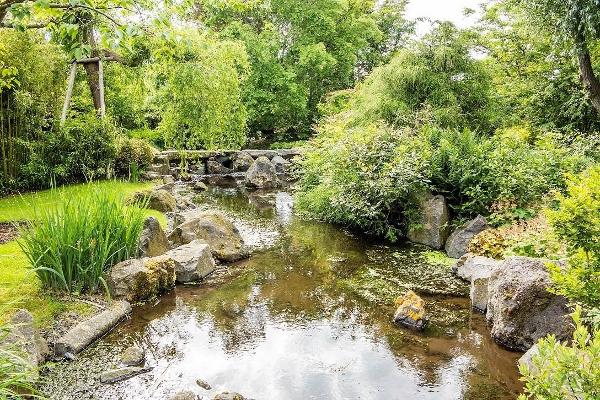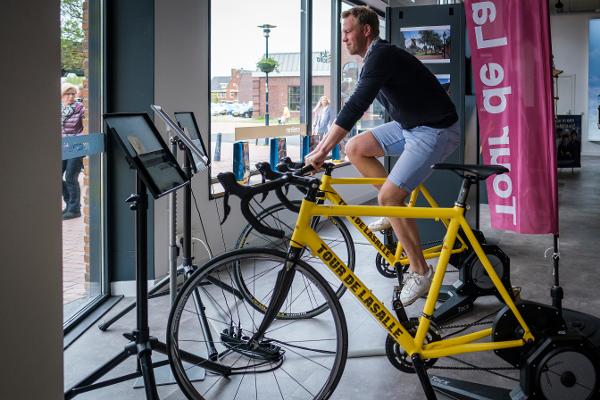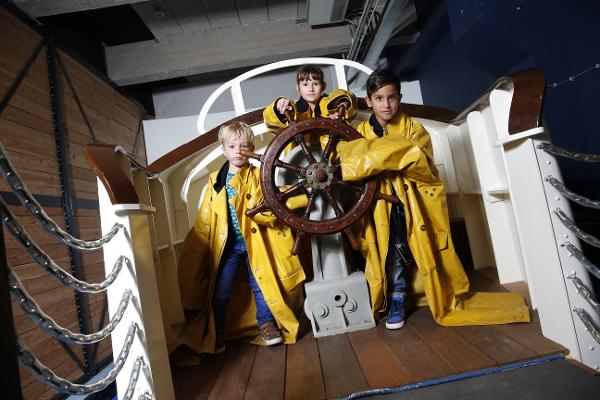The Helderse Vallei is the starting point of the 4 well-marked canoe routes from Den Helder with various footbridges along the way. In addition, Den Helder has various waterways that are easily accessible for canoes. The city and defense route (red route, 6 km there and 6 km back) passes Fort Dirks Admiraal, Fort Erfprins, Fort Westoever, the line and Willemsoord. Den Helder has a special line of defense that runs right through the city. This line of defense was built to protect Willemsoord, once the port and shipyard of our fleet, from attacks from the land. A visit to Willemsoord guarantees a pleasant day! Fort Westoever was built around 1825 to defend the newly built North Holland Canal against attacks on the port of Den Helder. In 1954 the fort was taken over by the Royal Netherlands Navy. They set up an emergency diesel power plant in the fort. Fort Westoever is the last link in the chain of forts, the passage to Willemsoord and the outer harbor. Fort Dirksz. Admiral is a living history book. From 1812-1813 the fortress was built by the French. In the years 1880-1890 the fortress was equipped with bomb-proof shelters. During the German occupation, the fortress was converted into an anti-aircraft battery. Fort Erfprins is not only the largest fort at 49 hectares, but also has the longest Bombproof barracks in the Netherlands. It is a 3 pentagonal bastion with 3 ravelins and an envelope. To this day, the fort is used by the Ministry of Defense. On the south side of Fort Erfprins are the remains of the oldest surviving defense system of the Den Helder Defense Line: Kaaphoofd Battery. Fort Kijkduin (museum and saltwater aquarium), Fort Harssens and Fort Oostoever are also part of the Den Helder defense line, but do not directly border the route.

De Stad- en Stellingroute
Nearby locations
-

“Hortus Overzee”
- Location
- Den Helder
In the centre of Den Helder, you will find a magnificent collection of colorful tropical plants. It's the largest Japanese garden in the Netherlands with running water.
-

Villastar home furnishings
- Location
- Den Helder
The cheapest home furnisher of the northern head. Choose from a very large assortment.
-

HDK Vocaal
- Location
- Den Helder
HDK Vocaal is a choir that was founded in 1949 by women who wanted to sing differently than classical or church music. We sing in various languages ??including English, French and Dutch and go in style from a Bergerette from the 18th century to this century.!
-

Den Helder Experience Store
- Location
- Den Helder
Citymarketing Den Helder has opened an Experience Store in the center of Den Helder. A unique concept where you can interactively obtain information about living, working, learning and leisure within the municipality of Den Helder.
-

Bovenjan
- Location
- Den Helder
On the edge of forest and dunes, at walking distance from the beach, there are two beautiful, well-maintained en fully furnished appartments under one roof. In the direct surroundings you will find a beautiful nature area with great cycling and walking opportunities, and an extensive canoe-route. For your daily groceries, a shopping mall is right around the corner.
-

Restaurant “’t Veerhuis Lands End”
- Location
- Den Helder
'T Veerhuis Lands End is literally in the north of North Holland. From this unique location on the dike, we offer a magnificent view. In our restaurant or at our terrace you can enjoy a nice cup of coffee, lunch, high tea, drinks or a dinner. Our chefs work with fresh products.
-

Seal trips with Blue Marlin IV
- Location
- Den Helder
Step aboard the 'Blue Marlin IV', discover the sea, sail along to the 'Razende Bol' also called "Noorderhaaks" and spot the seals in their natural environment.
-

“Kunsthal 45”
- Location
- Den Helder
Five times a year we organize for residents and visitors from inside and outside Den Helder, exhibitions. Come an take a look, the entrance is free.
-

National Lifeboat Museum Dorus Rijkers
- Location
- Den Helder
The Dutch lifeboat service through the ages and the safety aspects at sea are at the centre of attention in this museum. Original lifeboats, ship models, scale models, paintings, pictures, distinctions, life-saving equipment and movies are being displayed. All texts and computersimulations are in the English language and most movies as well. Daily, between 13.00 and 16.00 hrs, a 15 minute tour through the inner harbour can be made on board a historic lifeboat. Reservations for the boattrip not required.
